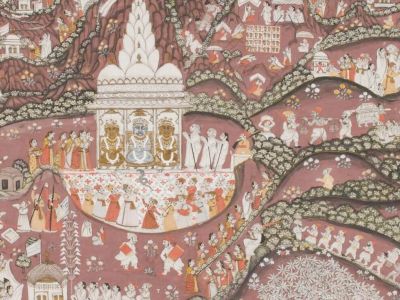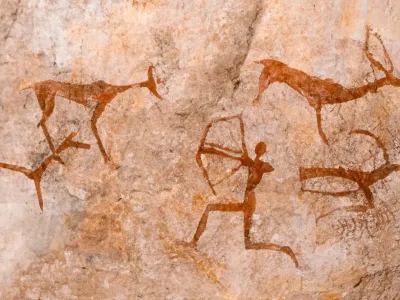Indian Cinema Ltd, Why?

India, known for its rich cultural heritage and diverse artistic expressions, has witnessed a notable shift in the dynamics of its film industry. The nexus between Dalal Street, the country's major stock exchange located in Mumbai, and Film City, the hub of the Indian cinema industry, raises intriguing questions about the state of artistic expression in this soft market. This article delves into the influence of this unique geographical convergence on the artistic landscape, exploring how it may have contributed to a dampening effect on the creativity of Indian films.
Proximity and the Union of Art and Profits:
The close proximity of Dalal Street and Film City in Mumbai has led to an intertwining of financial interests and artistic endeavors. The coexistence of the nation's primary stock exchange and the heart of its film industry has blurred the lines between the business of cinema and the art of storytelling. This architectural quirk has inadvertently fostered an environment where profit-driven motives often take precedence over artistic innovation.
The Dilemma of Separation of Concerns:
In software development, the principle of separation of concerns dictates that different aspects of a program should be compartmentalized to enhance modularity and maintainability. Similarly, in the world of cinema, the separation of concerns is essential for fostering a diverse range of storytelling and artistic expression. However, the physical proximity of Dalal Street and Film City seems to have disrupted this balance.
The Union of Art and Profits:
The film industry, being a business in itself, cannot be divorced from the pursuit of profits. However, the issue arises when profit-driven decisions start to dominate the creative process, resulting in a homogenized and formulaic approach to filmmaking. The confluence of Dalal Street and Film City has created an environment where financial considerations often overshadow the need for artistic exploration and experimentation.
Producer-Determined Art Endeavors:
The power dynamic between producers and artists has tilted towards the former, with a greater emphasis on producing content that caters to mass preferences. This trend has led to a surge in producer-determined artistic endeavors, where financial success becomes the primary metric for evaluating the worth of a film. Consequently, this has given rise to a saturation of content that adheres to established formulas, limiting the spectrum of creative expression.
The nexus between profit-driven motives and artistic expression, exacerbated by the proximity of major financial and cinematic institutions, has led to a troubling trend of censorship in India's cinema and television industry. Ridiculous issues, such as the portrayal of sensitive symbols like the national flag or the depiction of goddesses in erotic poses, have become grounds for censorship, resulting in the stifling of creative freedom and the destruction of entire studio sets.
The Profit and Production Driven Agenda:
In an industry where financial success often trumps artistic integrity, producers and studios are under pressure to adhere to mainstream sensibilities and avoid any content that may provoke controversy or offend certain segments of the audience. This profit-driven agenda has created a culture of self-censorship, where filmmakers and content creators are reluctant to explore themes that push boundaries or challenge societal norms.
Censorship Over Symbolism:
Issues such as the portrayal of the national flag or religious symbols have become hotbeds for censorship. The fear of offending patriotic sentiments or religious beliefs has led to absurd restrictions on artistic expression. Instances where characters wear the national flag or where goddesses are depicted in unconventional poses have been met with vehement protests and demands for censorship, often resulting in scenes being cut or entire projects being shelved.
The Cartoon Industry As a Joke:
Even the cartoon industry has not been spared from the heavy hand productivity and for profits and where cartoons are whole new style have its own set of dimensions to grow upon is nothing more than typical and childish entertainment. Cartoons, which are traditionally meant to be light-hearted and entertaining, have become subject to scrutiny over perceived cultural insensitivity or inappropriate content. This overzealous censorship has turned the cartoon industry into a caricature of itself, with artists and animators forced to tiptoe around arbitrary guidelines and restrictions.
Destruction of Creative Spaces:
The consequences of censorship extend beyond mere content alterations; they can have far-reaching implications for the entire creative ecosystem. The destruction of film sets and studios due to protests or backlash over controversial content is not uncommon. Entire projects have been abandoned or delayed indefinitely as a result of pressure from special interest groups or political agendas, leading to financial losses and stunting artistic innovation.
The Need for Artistic Freedom:
Ultimately, the stifling of artistic expression due to censorship hampers the growth and evolution of the cinema and television industry. Creativity thrives in an environment of freedom and experimentation, where artists are encouraged to push boundaries and explore new ideas. By prioritizing profit over artistic integrity and succumbing to censorship over trivial issues, the industry risks losing its relevance and cultural significance.
The Rise of the South:
As a response to the constraints imposed by the Mumbai-centric film industry, there has been a noticeable shift towards the South Indian film industry. Regional cinema, particularly in the southern states, has witnessed a surge in popularity, offering audiences a refreshing departure from the mainstream, profit-centric narratives dominating Bollywood.
Reimagining Architectural Frameworks:
In contrast to the Mumbai-centric model, the architectural layout of East and Northeast India could have created a more conducive environment for artistic expression. By decentralizing major financial and cinematic institutions, the separation of concerns and chain of responsibility could have been more effectively utilized. For example, establishing independent cultural hubs and film production centers in cities like Kolkata, Guwahati, and Bhubaneswar would have allowed for a more diverse range of voices and narratives to flourish.
Embracing Web Content:
The rise of web content presents a unique opportunity to break free from the constraints imposed by traditional cinematic architecture. With platforms like Netflix, Amazon Prime, and YouTube offering a global audience, content creators have greater freedom to explore niche themes and experimental storytelling techniques. In East and Northeast India, where cultural diversity is rich and varied, web content could serve as a platform for showcasing the region's unique artistic heritage and contemporary narratives.
Promoting Diversity on a Global Scale:
The architectural framework proposed for East and Northeast India could also serve as a blueprint for fostering diversity in artistic expression on a global scale. By decentralizing major cultural and financial institutions, countries could create more inclusive and vibrant artistic landscapes that reflect the diversity of human experience. This decentralized approach would not only empower local artists and storytellers but also enrich the global cultural tapestry.
The peculiar convergence of Dalal Street and Film City in Mumbai has inadvertently led to a dampening effect on the artistic expression of Indian cinema. The union of art and profits, driven by the proximity of major financial and cinematic institutions, has resulted in a homogenized approach to filmmaking. As the South Indian film industry gains prominence, it serves as a testament to the need for a more balanced and diverse cinematic landscape that prioritizes creative exploration over profit-driven formulas. The convergence of profit-driven motives and artistic expression, compounded by the proximity of major financial and cinematic institutions, has led to a disturbing trend of censorship in India's cinema and television industry. Issues such as the portrayal of national symbols or religious imagery have become grounds for censorship, resulting in the stifling of creative freedom and the destruction of entire creative spaces. It is imperative for the industry to prioritize artistic integrity and defend the right to free expression, lest it devolve into a mere shadow of its former self.









